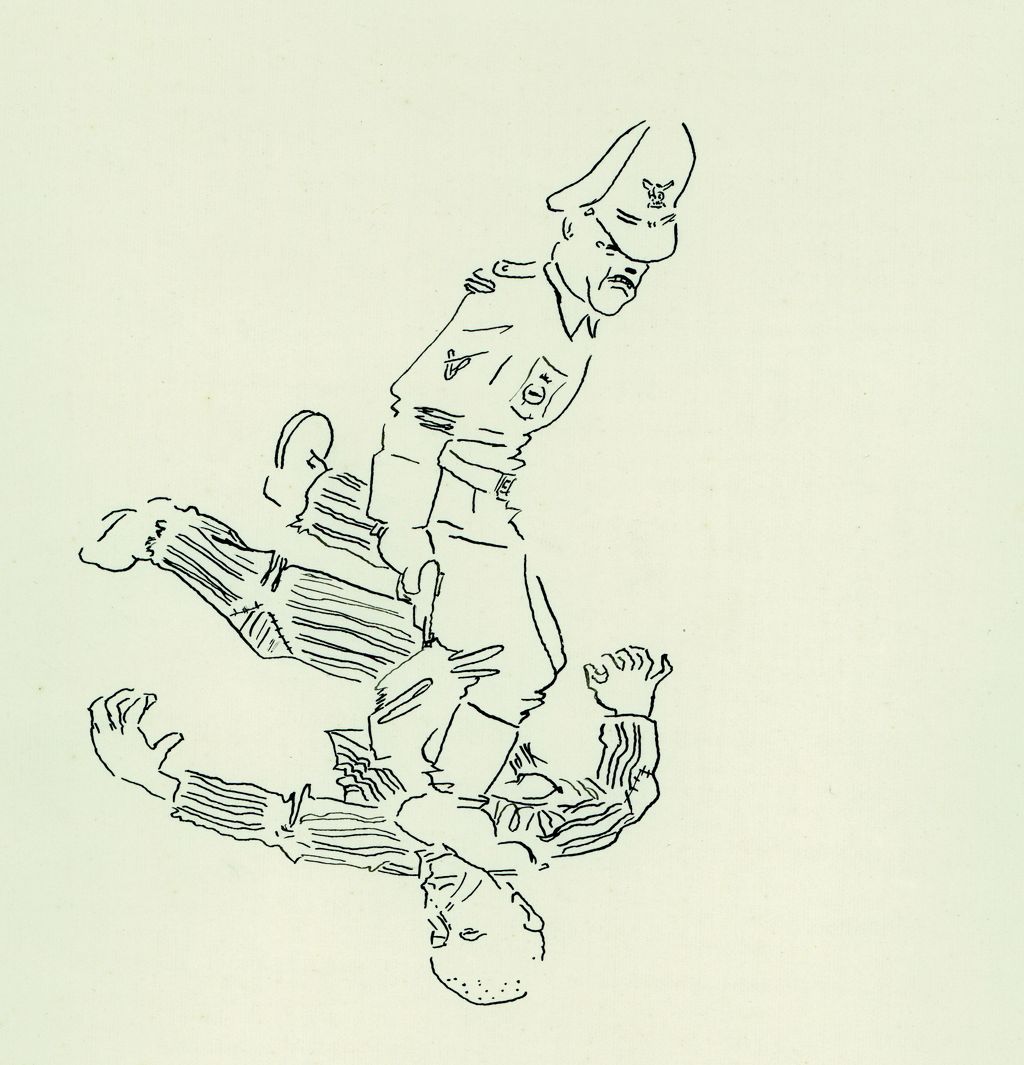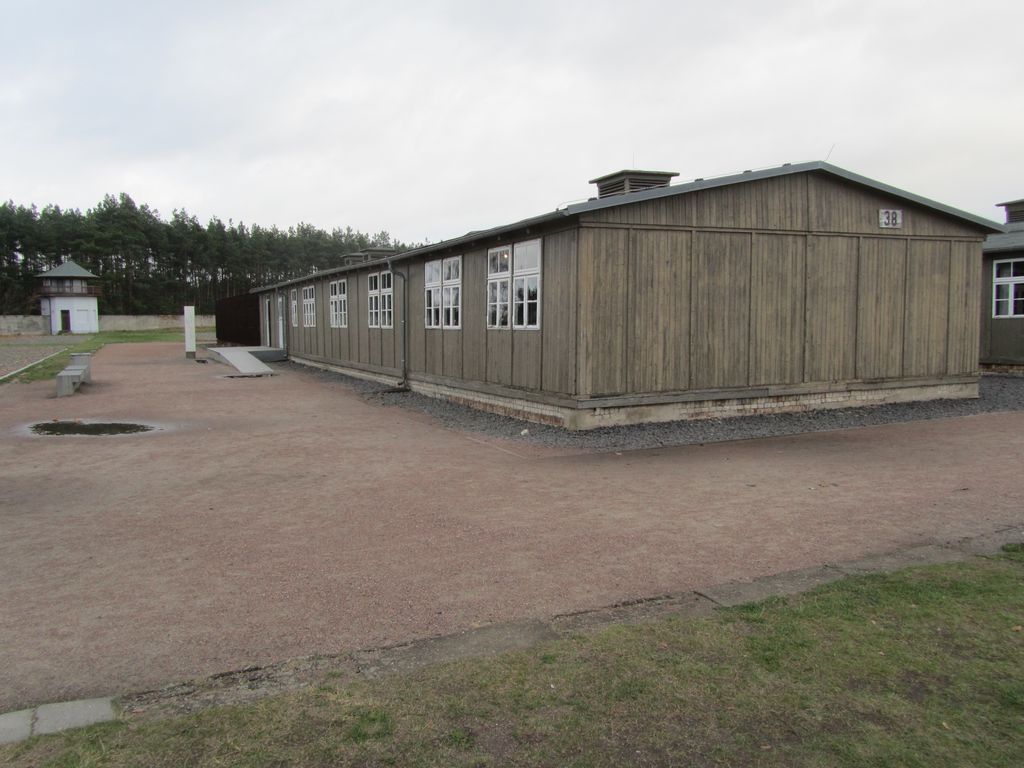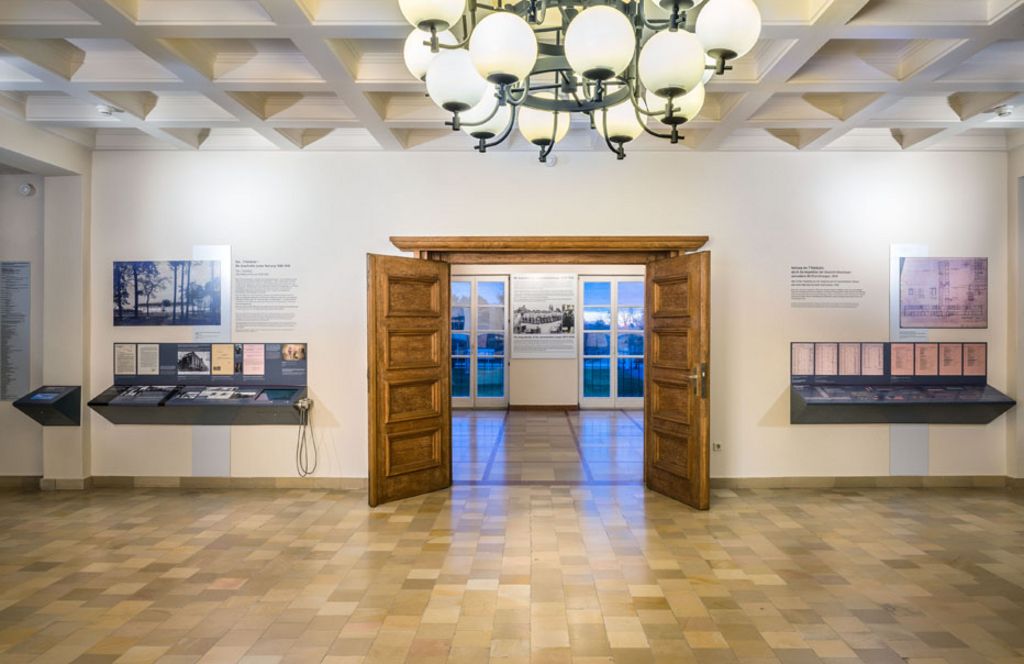Permanent exhibitions
Decentralised museum concept
The redesign of Sachsenhausen Memorial is based on a decentralised concept, which aims to communicate history to visitors in very places where it happened. Thirteen exhibitions on different sites examine the particular history of each and link it to a thematic presentation that sets it in a wider context.
The Camp-SS 1936-1945: Division of Labour among the Perpetrators
The exhibition on display in the original office rooms of the commandants’ house focuses on two particular perpetrators. It illustrates the individuals’ culpability in the context of their biographies.
The Camp-SS 1936-1945: Excesses and direct Perpatrators
Tower A is where Department III (Protective Custody Camp) of the concentration camp command was based. Its personnel had direct power over the prisoners. Its activities are shown in the exhibition, which highlights specific excesses and those who committed them – ranging from SS Block Leaders up to the head of the SS. Insights are also given into the special design and layout of Sachsenhausen concentration camp, which embodied the SS goal of achieving total control.
Jewish Inmates in Sachsenhausen Concentration Camp 1936-1945
Barracks 38 and 39 were part of the 'Small Camp'. It was there that the SS incarcerated Sachsenhausen’s Jewish prisoners from November 1938 to October 1942. An anti-Semitic firebomb attack in 1992 destroyed parts of both barracks. The new Museum Barrack 38 tells the story of Jewish prisoners in Sachsenhausen Concentration Camp, with the aid of prisoner's biographies.
The 'Everyday Life' of Prisoners in Sachsenhausen 1936-1945
In Barrack 39, the 'everyday life' of prisoners in Sachsenhausen Concentration Camp is presented thematically in a multi-media environment. Twenty different prisoners each relate their personal experiences under the headings: ‘Roads to Sachsenhausen’, ‘Prison Society’, ‘Work’, ‘Time and Space’, ‘Violence, Dying and Death’ and ‘Living with the Memory’.
Medical Care and Crime. The Infirmary of Sachsenhausen Concentration Camp 1936–1945
The "Medical Care and Crime" exhibition examines various aspects of the subject, from medical care to medical experiments on prisoners and the murder of patients. A section is devoted to the men and women who, after the attempt to kill Hitler on 20th July 1944, were brought to Sachsenhausen Concentration Camp.
Museum of Soviet Special Camp No. 7 / No. 1 in Sachsenhausen 1945–1950
Between 1945 and 1950, the Soviet secret services held a total of around 60,000 people in the core area of the former concentration camp. The museum, which is housed in a new purpose-built exhibition space and two remaining original barracks, documents the history of the Special Camp and the fate of its inmates, at least 12,000 of whom died from hunger and disease.
The Cell Block in Sachsenhausen Concentration Camp 1936–1945
Put up by inmates in 1936, this three-wing block of cells was used as a prison by the Gestapo and the camp authorities. It was a place veiled in secrecy, a place of torment and murder. It held those punished by the SS for infringements of camp discipline as well as prominent figures arrested by the Gestapo. The exhibition is housed in five original cells of the one remaining wing of the cell block.
Sachsenhausen Concentration Camp1936-1945. Events and Developments
Located in what was once the prisoners’ kitchen, the exhibition focuses on key events in the history of Sachsenhausen Concentration Camp, illustrating changes and continuities and examining phases and breaks. On the walls of the cellar, in which potatoes were peeled, remarkable paintings from the eras of the concentration camp and the Soviet Special Camp can still be seen. A twenty-minute film, shown in a separate room, relates what happened in Sachsenhausen Concentration Camp to broader historical developments between 1933 and 1945.
Murder and Mass Murder in Sachsenhausen Concentration Camp 1936–1945
The exhibition deals with the history of the site, as well as the concentration camp's various facilities for killing people. In concentrates on separate planned acts of murder and mass murder, including the shooting of more than 10,000 Soviet prisoners-of-war in the autumn of 1941.
The Town and the Camp. Oranienburg and the Sachsenhausen Concentration Camp1936-1945
At the northern end of the camp triangle is Tower E. It houses a small exhibition about various aspects of the relationship between Sachsenhausen Concentration Camp and the surrounding area: the town of Oranienburg and the parish of Sachsenhausen.
The Administrative Centre of the Concentration Camp Terror. The Concentration Camps Inspectorate 1934–1945
Der wichtigste, weitgehend original erhaltene Ort der nationalsozialistischen Schreibtischtäter steht im Mittelpunkt der Ausstellung „Die Zentrale des KZ-Terrors“: Im ehemaligen Gebäude der „Inspektion der Konzentrationslager“ (IKL) informiert die Schau über die Geschichte der SS-Behörde, von der aus zwischen 1934 und 1945 alle Konzentrationslager zentral verwaltet wurden.











